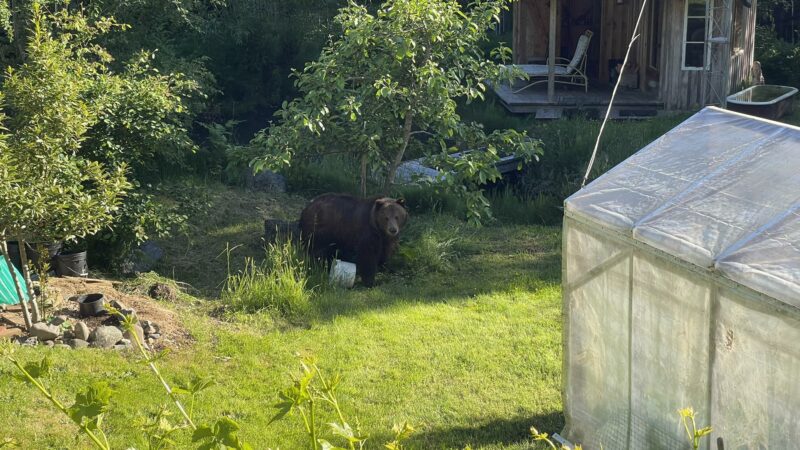How to Hold A Pistol
We may earn revenue from the products available on this page and participate in affiliate programs. Learn More ›
Becoming proficient with a handgun is one of the most challenging shooting skills, and it all starts with how you grip or hold the pistol. Your grip is your connection with the gun, and one of the most important things to get right if you want to shoot quickly and accurately. Pistols are short, usually have heavier triggers than rifles, and are inherently subject to more human-induced error. With some good coaching, just about anyone can learn to shoot a rifle with great accuracy in short order. Handguns aren’t so easy — but the road to mastery starts with how you hold the pistol and manage your grip.
There are different schools of thought when it comes to gripping and shooting handguns. Your approach will be different if you’re competing in a bullseye league or another form of traditional target shooting like smallbore or airgun. Because most of us have a mixed interest in pistol shooting — self defense, recreational plinking, or action pistol competition — we will focus on gripping the pistol in a contemporary style that will help you shoot accurately and manage recoil effectively. Understanding the key points of how to hold a pistol will help you shoot better, no matter which technique you choose.
How to Hold A Pistol: Key Takeaways
- Employ a high grip with good pistol/wrist/arm alignment to mitigate recoil
- Squeeze the gun firmly: A loose grip will degrade accuracy, make recoil tough to manage, and can cause guns to malfunction.
- Keep your trigger finger relaxed so it can move freely
- Balance forces between your primary and support hands, and build a stable stance
How to Hold A Pistol, According to Who?
Specific methods of holding a pistol have been constantly evolving, probably since the first pistol was invented. Even in the past 100 years, protocols and preferences have changed drastically. Pistols, by the classic definition, were designed to be fired with one hand, and it wasn’t until relatively recently that shooters started thinking outside that box.
Sheriff Jack Weaver had probably the most influence when he began utilizing a two-handed grip as a practical way to aim and shoot his pistol more quickly and accurately. The “Weaver stance” as it became known was also championed by legendary Gunsite Academy founder and firearms instructor Jeff Cooper. For a deeper look into handgun accuracy, check out this story and video we recorded at Gunsite in 2023.
Fundamentals of A Good Grip
There is room for interpretation on what, exactly, a “good” grip looks like, but it helps you hold the gun safely and securely, make accurate shots, and control recoil. Knowing how to hold a pistol will help you shoot more effectively and enjoy the experience more. Though there is lots of nuance, there are several key fundamentals that good grips have in common. I’ll walk through those and tell you how to hold a pistol and common mistakes that people make.
How to Hold A Pistol: Step-By-Step
- Establish a high grip, as close as possible to the bore axis
- Hold the grip most firmly with the middle and ring finger—trigger finger should be relaxed and move freely, but keep it out of the trigger guard until ready to fire
- Wrap support hand fingers around the fingers of your shooting hand, filling in empty space on the pistol’s grip with your thenar (thumb pad), maximizing contact with the pistol
- Both thumbs should be pointed forward, support hand thumb can be used for added grip on the pistol’s frame. Thumb on the trigger finger hand should be relaxed.
- Squeeze the pistol firmly with both hands, but make sure your trigger finger stays relaxed
- Extend the pistol straight out in front of you, with your shoulders low and locked — from above, your shoulders and arm should form an isosceles triangle with the pistol at the point.
Set Your Grip Right
The foundations of how to hold a pistol begin with setting the grip. If you don’t acquire a good grip on the gun from the start, your shooting will suffer. Two of the most important factors for a solid grip are the height and wrist alignment that you establish.
Vertical Axis: Grip It High
One of the most beneficial things you can do when establishing your grip on a pistol is to set it high. What I mean by that is to have your primary hand grab the pistol as high as possible on the grip. The web of your hand should smush up against the beavertail or otherwise be as high as possible without interfering with the slide operation. Your middle finger should be wrapped around the grip, tight against the bottom of the trigger guard.
One common mistake people make when holding a pistol is to set their grip too low, which sets the bore axis, or imaginary line that goes through the middle of the barrel, up higher than it could be. This makes it harder to control the pistol’s recoil because the leverage the recoiling pistol has on your hand is a function of the recoil force itself, and the distance from where that force is applied (along the bore axis) to your hand. The closer you can establish your grip to the bore axis, the less leverage or flipping effect the recoil will have on your hand.
Horizontal Axis: Grip and Arm Alignment
The other important factor is how your grip on the pistol lines up with your wrist and forearm. Your goal should be to have a grip that allows your skeletal structure to absorb the impact of recoil and minimize movement while shooting. When you hold the pistol, looking down from above, you want the barrel to line up with your forearm for single-handed shooting. Just like a grip that’s too far below the bore axis will result in excessive muzzle flipping and movement, a bore axis that doesn’t line up with your bone structure will be tougher to control. For two-handed shooting, your grip will usually angle the line of the bore axis inside your wrist and forearm slightly. With both arms extended, the force along the bore axis will be split evenly between them.
Developing a good grip on any particular pistol can take practice, especially if the grip size is large for your hands. Getting these two factors right is a big step towards handgun proficiency though. If something feels unstable, adjust your grip to see if it improves.
Use Two Hands Effectively
Pistols never used to be thought of as two-handed weapons, but guess what: If you want to shoot them quickly and accurately, two hands is the way to go. Much has been learned about how to manage recoil and shoot fast and accurately, and just like Weaver’s shooting style was a quantum leap in handgun shooting, a modern opposable grip style of handgun shooting has made a state of balanced accuracy and recoil management more attainable to everyone.
An opposable grip is called such because it uses opposing forces from both hands to stabilize and drive the handgun.
Opposable Grip: The Primary Hand
Once you’ve established the position of your grip, the fingers of your primary hand should be wrapped around the grip of the pistol, with your ring finger up tight against the trigger guard. Squeeze the grip firmly (not white-knuckle-tight) with your middle and ring fingers. On most pistols the pinky adds helpful support, but if you grip too tightly with the pinky, you will tend to throw shots low. You want the tightest portion of your grip to be as high as possible.
Make sure your grip allows your trigger finger to be relaxed and move freely. Often, I will add a bit of squeeze with my thumb, which should be pointing forward, riding the safety or alongside the bottom of the slide. If shooting one-handed, point the pistol towards the target, keeping the bore axis aligned with your forearm.
Opposable Grip: The Support Hand
When shooting two-handed, the fingers of your support hand should wrap tightly around your primary hand’s fingers, and tightly up against the trigger guard. Roll your support hand onto the grip, filling any empty real estate with the thenar (thumb pad) of your hand. Your support hand should nest just in front of and under your primary hand thumb, and both thumbs should be pointing forward.
If left to your own devices, you may find it tempting to cross your thumbs, using your support hand thumb to pin your primary hand thumb against the grip. You might also be tempted to hook your support hand index finger in front of the trigger guard to counteract recoil. Don’t. Doing either of these will loosen the fit of your support hand and reduce the contact area it has with the gun. The exception here is if you’re shooting a revolver, in which case the thumb of the support hand can be used to pin the other thumb against the frame.
If there’s a key takeaway, it’s this: you want as much of your hands, pasted to as much of the pistol’s grip as possible. The support hand thumb should be pressed against the pistol’s frame, just below the slide. Some pistols even have textured or scalloped areas specifically for the thumb to apply pressure. The GoGun Gas pedal is an aftermarket tool that can help with this too.
Use your support hand to squeeze equally or slightly more tightly than you are with your primary hand to lock in your grip. You can dive further into the intricacies of how to hold a pistol as your skill improves, but the key is to balance input and force between both hands to produce a stable platform that won’t easily be knocked out of whack.
How to Hold A Pistol: Review
- Set a high grip with good pistol/wrist/arm alignment to mitigate recoil
- Squeeze the gun firmly: A loose grip will degrade accuracy, make recoil tough to manage, and can cause guns to malfunction.
- Make sure your trigger finger is relaxed and can move freely
- Balance forces between your primary and support hands, and build a stable stance
Learning how to shoot a pistol can feel like drinking through a firehose. There are lots of styles of pistols and methods to shoot them. To become proficient, there are lots of little details to master — and each one matters. However, you can cut your learning curve dramatically by just remembering these key principles.
Set your grip high and align the bore axis with your frame. Hold onto the gun tightly. You don’t want to grip it so tightly that you’re shaking, but grab it like you mean it. A loose grip will cause a number of problems and because semi-automatic pistols usually depend on recoil force to operate, they will often malfunction if your grip is too loose. Even with a tight grip, remember to keep your trigger finger relaxed and free to move. This way you can fire crisp, accurate shots without pushing the gun off target. No matter how you choose to hold a pistol, or the grip style you prefer, make sure that you’re balancing the forces between your primary and support hands, using a stable stance to keep you on target shot after shot.
The post How to Hold A Pistol appeared first on Outdoor Life.
Source: https://www.outdoorlife.com/guns/how-to-hold-a-pistol/






